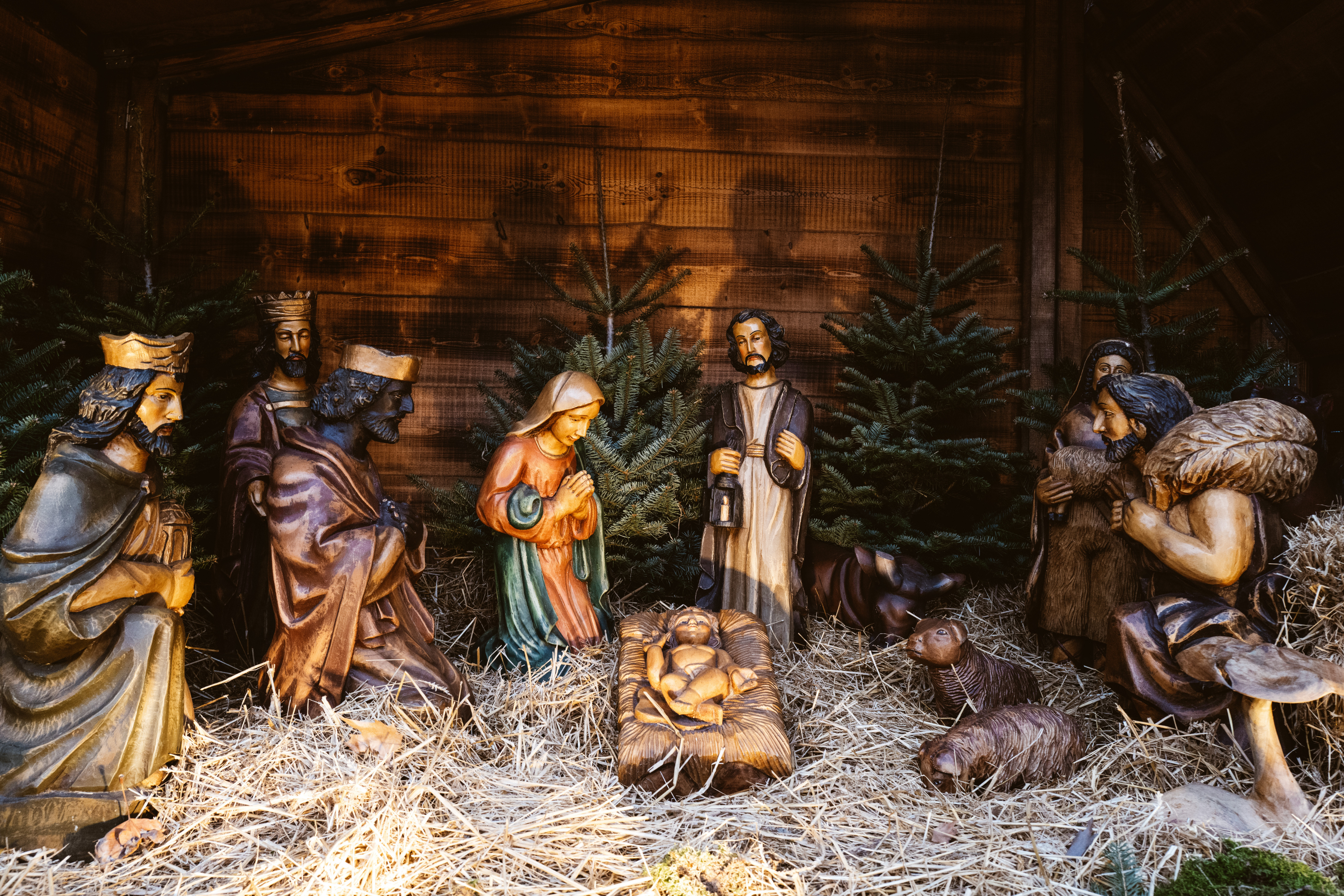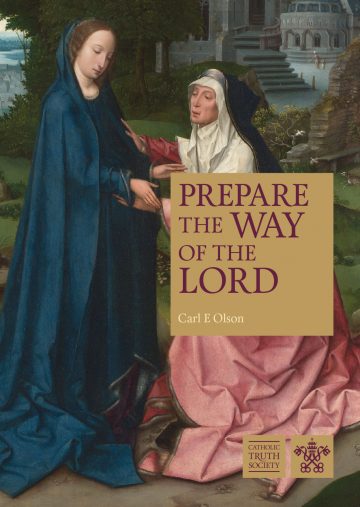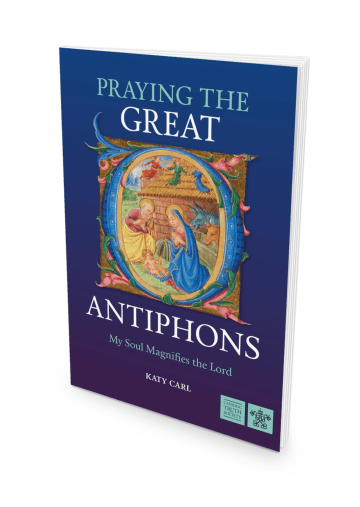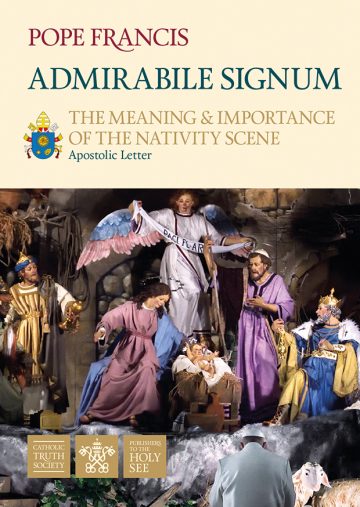Each November, as the year draws to its end, and nature seems to be dying all around us, with leaves falling from the trees and the evening darkness coming earlier and earlier, the Church calls us to an end and a beginning. November is the month in which we pray for the dead and with its close, Advent begins.
Advent is the season of prayer and preparation that leads us up to Christmas. It is four weeks long. The first Sunday of Advent marks the beginning of a new Church Year. We begin the journey towards Christmas, our great annual celebration of the birth of Jesus Christ amongst us.
Unfortunately, all around us the commercial world is busy with Christmas preparations too – and has been since late September. As Christians, we have to live in the everyday world, and be a part of it, but also see it through the eyes of those who have met Christ and so understand the real meaning of things.
Just because we find the massive commercial exploitation of Christmas to be annoying doesn’t mean that we have to sneer and turn away from all that is happening. Christian’s today need to do what has always been done in the past, through all the centuries of Christian life and worship – the world needs to be touched and healed and transformed by the reality of the Church’s message. Shops are useful – here we can stock up on the things that will make Christmas pleasant and wonderful and cheery – and because Christmas is no mere empty festivity, but centred on something true, we have huge scope for real celebration and this is something to be shared.
The Advent wreath as wedding ring
Most churches, and many families, now have an Advent wreath. This is a custom that began centuries ago in Northern and central Europe, but only reached Britain fairly recently. An Advent wreath is a circle of evergreens – traditionally, the base was a cartwheel, removed from a cart for the winter months when it would be replaced by runners to enable travel over snow. Like a wedding-ring the circle represents eternity and faithfulness. The use of evergreens is a reminder that Christ is always present, a constant, always ready for a renewal of our love and friendship, “ever green”.
Into this evergreen wreath are placed four candles. One will be lit on the first Sunday of Advent, two on the second, and so on. One traditional colour for the candles is red, but a variant on this is to have three purple candles and one pink one. Why purple? It is the traditional liturgical colour of Advent, signifying penance – it’s also used in Lent. And why pink? This is because the third Sunday in Advent is traditionally known as Gaudete Sunday – from the Latin word for joyful celebration (giving us the English word “gaudy”). A priest can wear rose-coloured vestments on Gaudete Sunday.
Although Advent wreaths were popular in Germany and Austria and elsewhere throughout the 19th century, they were unknown in England. Then when winter skiing holidays became popular, people saw these attractive wreaths in Alpine villages, and brought the idea home with them. But what really helped to reinforce the tradition was a BBC television programme, Blue Peter, which in the 1960s showed children how make an “Advent crown” using old wire coat hangers covered in tinsel. It is now rare to find a church that doesn’t have an Advent wreath, and lighting the candles week by week helps to emphasise the sense of the Light of Christ drawing nearer and nearer as Christmas approaches.
The calendar countdown
Other Advent traditions include Advent calendars where you open a small cardboard window every day throughout December. Very attractive ones can be bought at religious bookshops or in the gift-shops associated with old churches and cathedrals. Some families make their own, and you can also make or buy something more permanent, such as a wall-hanging with pockets, in each of which is some small Christmassy item to be taken out and displayed. Some Catholic schools and groups invite people to put their names into a box and everyone then draws out a name and prays for that person throughout Advent.
Cribbing
The two main items that a Catholic family will have in the home over Christmas are a Christmas crib and a Christmas Tree. The Christmas crib is said to have been invented by St Francis of Assisi, who made model figures of Mary, Joseph, and the Christ-child, together with some shepherds and the Kings, and put them into a model of a stable for children to enjoy. His aim was to teach about the Christmas story, and to help people to feel that they were really present at that very first Christmas long ago in Bethlehem.
Today, you can buy crib figures at any Christian bookshop. There are some beautiful and expensive ones carved in wood and hand-painted, or much cheaper ones made out of plaster or plastic. Many families buy a set of crib figures which are cherished for years and become family heirlooms. Many also add to the crib scene over the years with extra shepherds and angels and animals, some bought and some home-made, many with sentimental associations of Christmasses down the years.
A stable can be created out of wooden crate or box, or fashioned out of papier-mâché or cardboard. Ingenuity can produce lighting which makes a lantern glow in Joseph’s hand, or a brazier burn by the doorway. A background scene depicting sheep on a hillside can be painted behind a rear window. There are all sorts of possibilities.
One idea is to put up the Crib scene on Gaudete Sunday, the third Sunday of Advent – but just the stable at first. Then the figures are introduced one by one each day, until the Christ-child himself is placed in the manger after Midnight Mass at Christmas, and the Three Kings arrive at Epiphany, having made a slow journey through the different rooms of the house over the Christmas season. During the latter part of Advent, family prayers can take place by the crib, perhaps by candlelight.
Every Catholic school should of course also have a crib, which should have pride of place in the main hall or entrance area. Every church will naturally also have one. But there are also other possibilities. Some shops or offices might be interested in having a crib in their window in the run-up to Christmas. An outdoor crib is a wonderful idea for the church. Designing and making one, and obtaining the necessary figures, might be a useful parish project. Sturdily built, and suitably safeguarded, it could be a good focal point of local interest If you are worried about vandalism, the local Police might be able to give advice. And don’t be afraid that a public crib scene is not allowed in modern Britain – if it is on private land, eg on land belonging to a church or to a shop or group which is happy for the crib to be there, then no official permission need be sought and there can be no reason for anyone to object to its presence.
Putting up the tree
The Christmas tree is something that we can also attribute to a saint. St Boniface was a Devon man, born at Crediton where he is still honoured as a local hero. He was a Saxon and lived in the 7th century. His baptismal name was Wynfrith, but he took the name Boniface (Latin for “one who does good”) when he was ordained and became a missionary, heading for Germany and the pagan tribes who lived there.
He discovered that they worshipped trees, and that they had great fear of the tree-gods whose dark and brooding presence was felt in the vast conifer forests. However, by chopping down a great tree, which was regarded as especially sacred, Boniface revealed that there was no need to fear any more – he taught that the one true God is a God of love, who came to dwell among us as a helpless baby. Henceforth trees took on a new significance – decorating one to honour Christ’s birth, and also the tree of Calvary on which Christ died for us all.
A Christmas tree is a thing of joy and beauty. It can also be a Christian symbol, its lights echoing the candles of the Advent wreath with their reminder that Christ is our light, its toys and gifts reminding us that this is a time for generosity and mutual love.
The Christmas tree should not go up until just before Christmas – Advent is a season to be savoured in its own right, and Christmas should not arrive too soon. Once the tree is up and decorated, Christmas has really arrived. Most families stack the Christmas presents around the tree, and this looks very attractive. The tree, especially when it is lit at night in a darkened room, is a natural gathering-place. Some families sing carols around the tree.
A Christmas tree can also be blessed – sprinkle it with holy water and ask for God’s blessing on the home and family and all visitors during the Christmas season, and follow up with an Our Father, Hail Mary, and Glory be…
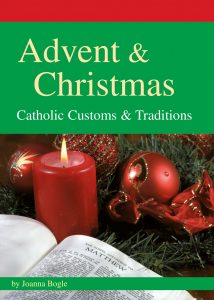 This blog is extracted from our ebook Advent & Christmas: Catholic Customs & Traditions. This handy booklet sets out the rich heritage of customs long practised by Catholics during the seasons of Advent and Christmas.
This blog is extracted from our ebook Advent & Christmas: Catholic Customs & Traditions. This handy booklet sets out the rich heritage of customs long practised by Catholics during the seasons of Advent and Christmas.
To learn more customs & traditions for the Advent and Christmas seasons, and to support the mission of CTS, download the ebook of Advent & Christmas: Catholic Customs & Traditions from your preferred ebook platform.
